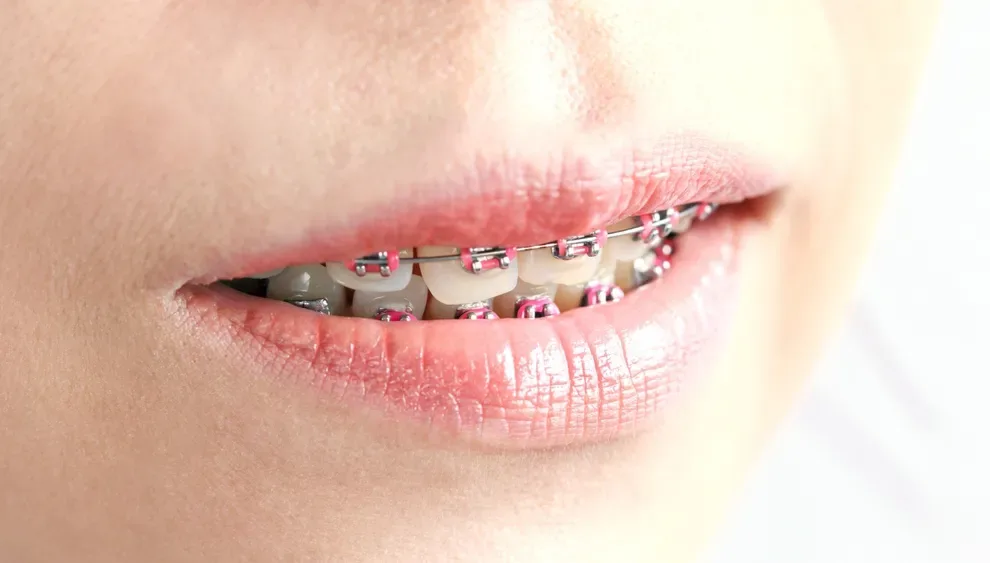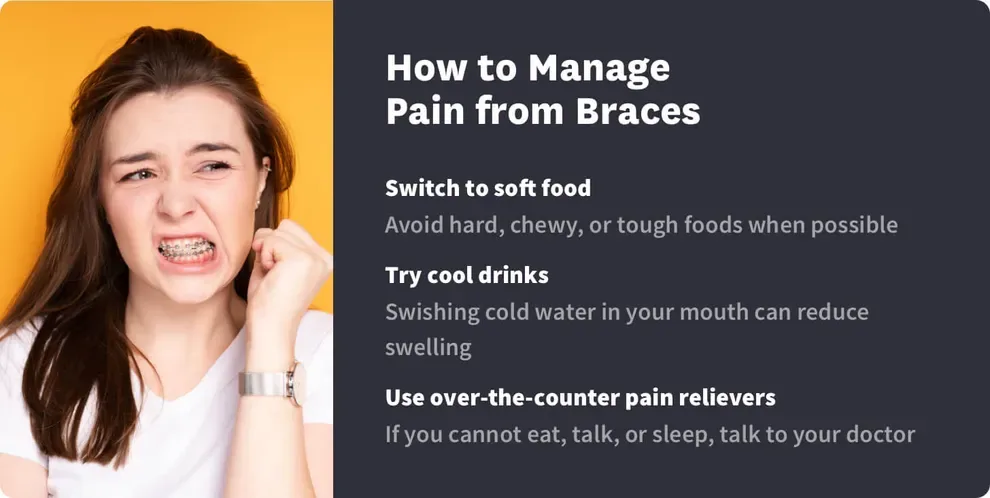Do Braces Hurt When Put On, Tightened, or Taken Off?

Table of Contents
- Pain Expectations
- Will Braces Tightening Hurt
- Braces Removal Discomfort
- Pain Management from Braces
- Aligners Could Reduce Your Pain
You might worry about getting adult orthodontics because you remember the discomfort you experienced as a child with braces. Your child might also worry about getting braces for fear of pain.
Although braces can be uncomfortable at certain times in the process, overall, they are not painful. If your braces cause pain rather than pressure or discomfort, you should speak to your dentist.
Getting braces put on can cause some anxiety and physical discomfort. All types of orthodontics, from traditional metal brackets to clear plastic aligners, cause new sensations in the mouth.
They are also designed to put pressure on your teeth to push them into proper alignment, which can be uncomfortable for the first few days after adjustments. However, you should quickly get used to orthodontics so they are hardly noticeable when you eat or speak.
Sometimes, after switching to a new aligner tray or getting metal brackets adjusted, there is a small amount of pain. This should not last for more than two to three days after the adjustment because your teeth and mouth need to get used to the new sensations.
Increasing pain, or pain that does not go away, should be reported to your dentist for help. At home, you can manage pain from recent braces adjustments with over-the-counter painkillers like acetaminophen or ibuprofen, or with a hot or cold compress to relax the muscles and reduce inflammation.
Braces should not hurt, but it can take some time to get used to them, as pressure is put on your teeth. Here is some information on when braces might cause discomfort, so you can manage the process until your braces are removed.

Application Day: How Much Pain Can You Expect?
Orthodontists typically need an hour or two to apply braces to your teeth. When the work is done, you’ll be in some pain.
To apply your braces, your orthodontist will:
Prepare your teeth. The surface must be both clean and dry.
Brush on adhesive. Glue keeps brackets attached to the front of your teeth.
Thread with wire. Brackets are connected with a thin bit of wire.
Braces move your teeth very slowly, so you won't see a dramatic movement shift within hours of your appointment. But the wire and brackets are tugging at your teeth, and that can be uncomfortable.
Researchers say the pain starts within a few hours, peaks at 24 hours, and tends to fade after about three days. Choosing a different type of bracket won't help, as both self-ligating and conventional brackets cause discomfort.
Braces Tightening: Will It Hurt?
Periodically, you'll head back to your orthodontist. During each visit, your doctor will tighten your wires, add appliances (like rubber bands), or otherwise help to shift their teeth into new positions. Once again, you can expect discomfort.
When wires shorten or bands pull, your teeth are shifted out of their normal spots into new positions. The bone that supports each tooth is remodeled, and the tiny threads that attach teeth to gums are stretched. Your body is working hard, and you'll feel that work as pain.
Researchers say adults tend to feel more discomfort than children. But everyone feels pain after an appointment like this. The length of the discomfort is directly related to the amount of work done in your visit, but expect it to last for several days.
Whether you're getting braces put on, tightened, or removed, those nerves can begin to shout out in pain.
Braces Removal: Should You Expect Discomfort?
If each visit causes pain, it's reasonable to look forward to the day your brackets and wires come off. That should be the point at which your distress stops. Unfortunately, this last visit can be uncomfortable too.
Your orthodontist must:
Remove the wires.
Remove the braces.
Polish away remaining glue.
Researchers say discomfort during this process is common. Your pain intensity may vary, depending on the tools your doctor uses. But hardly anyone emerges from this visit without at least a small amount of pain.
3 Ways to Manage Pain From Braces
Discomfort from your brackets and wires is normal, natural, and to be expected. But you don't have to live with a sore mouth. You can take action.
Ease discomfort through these three steps:
Switch to soft food. Researchers say hard, chewy, or tough foods can spark pain in people with braces. Ease up on chewing while your teeth are moving, and you could feel more comfortable.
Try cool drinks. Your gums and lips may swell in response to tooth movement. Reduce that swelling with very cold water. Try swishing it through your mouth rather than gulping it down.
Use over-the-counter pain relievers. If your mouth is so sore that you can't eat, talk, or sleep, try a product recommended by your doctor.
If the pain is so significant that you feel you just can't stand it, call your doctor. No one expects you to live in excruciating pain. Lengthening your wires a bit or moving one pesky bracket could help you to feel better.
Aligners Could Reduce Your Pain
As bone breaks down and rebuilds, your body reacts to the change with pain signals. But some tooth-moving methods are simply easier to tolerate than others.
Clear teeth aligners can also move your teeth. Plastic trays apply gentle pressure along the entire surface of your teeth, and they can help you to get the smile you've always wanted.
Researchers say the pain associated with braces is "significantly greater" than the discomfort aligners can cause. That's especially true at the beginning of care when pain tends to be most acute. People with aligners have lower pain scores in studies than those with braces.
